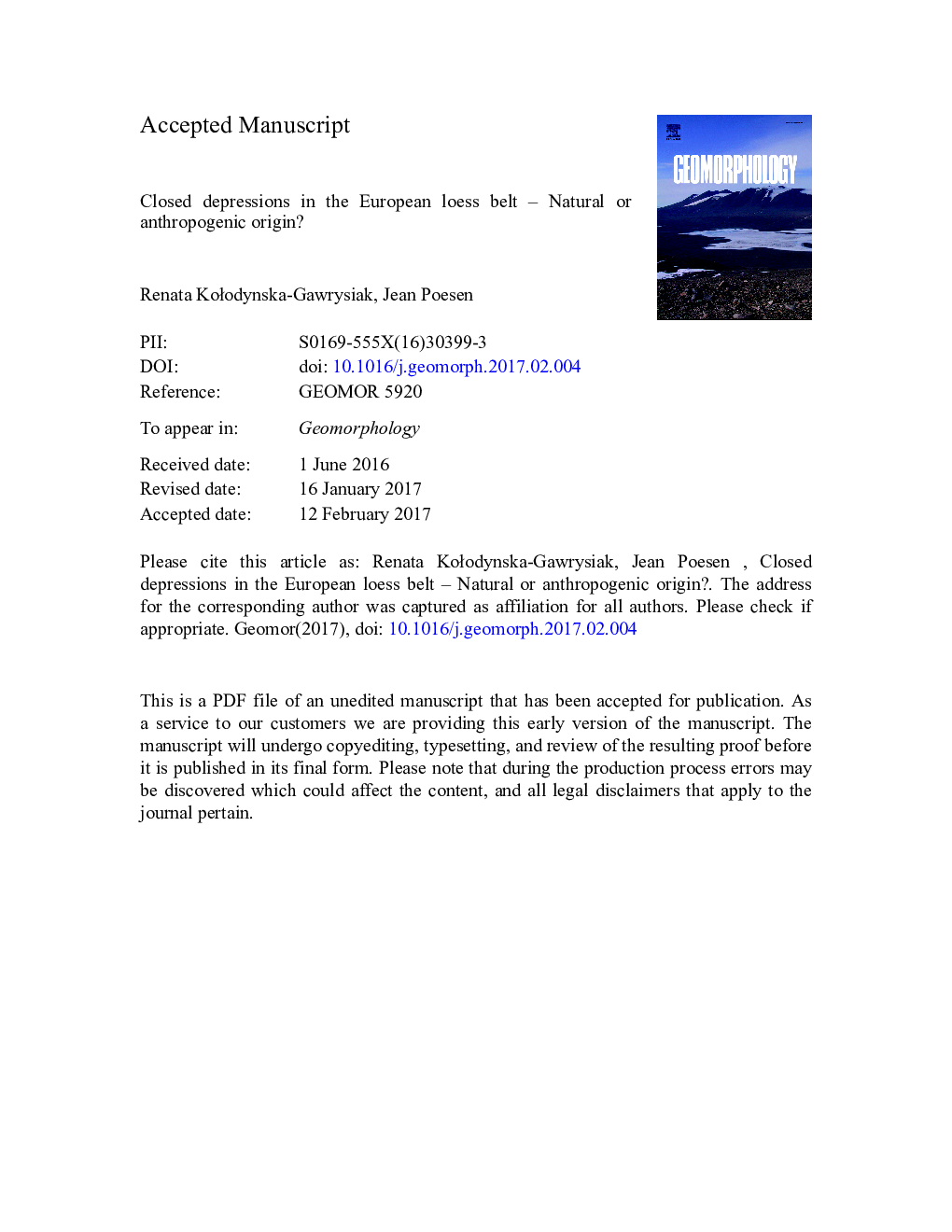| کد مقاله | کد نشریه | سال انتشار | مقاله انگلیسی | نسخه تمام متن |
|---|---|---|---|---|
| 5781004 | 1635361 | 2017 | 61 صفحه PDF | دانلود رایگان |
عنوان انگلیسی مقاله ISI
Closed depressions in the European loess belt - Natural or anthropogenic origin?
ترجمه فارسی عنوان
افسرده های بسته در کمربند لائوس اروپا - منشا طبیعی یا انسان شناسی؟
دانلود مقاله + سفارش ترجمه
دانلود مقاله ISI انگلیسی
رایگان برای ایرانیان
کلمات کلیدی
افسردگی بسته لس تاثیر انسانی، لوله کشی، ترموکارت،
موضوعات مرتبط
مهندسی و علوم پایه
علوم زمین و سیارات
فرآیندهای سطح زمین
چکیده انگلیسی
Closed depressions (CDs) are typical geomorphological features of the loess belt in Europe. CDs have been reported in several regions of the European loess belt, where they are described as hollows, mardeles, wymoki, crovuri, bludtsa and zapadiny. The natural and anthropogenic origins of CDs are debated in literature. Moreover, no comprehensive review of the geomorphic properties or the evolution of these depressions exists. Therefore this paper reviews the characteristics of CDs in the European loess belt and attempts to better understand their genesis based on detailed case studies. The main morphometric features as well as sediment deposits within CDs in several sub-regions of Europe were analysed and compared. Morphometric properties of CDs from the West European and East European loess belt were investigated through a comparison of CDs from two representative regions, i.e. East Poland and Central Belgium. In both study areas, CDs under cropland are similar. However, a comparison of morphological features of CDs under forest, revealed clear differences, suggesting a different origin of CDs from both regions. Infilled sediments in CDs show various litho-genetical features in different regions of the European loess belt. The morphometric features, ages and stratigraphy of infillings clearly indicate that both anthropogenic and natural processes have shaped these landforms within the loess belt of Europe. CDs observed in Eastern Europe may have a very different origin than those documented in Western Europe. Detailed analysis of CDs in Poland and in neighbouring regions of East Europe, suggest that CDs are natural landforms: thermokarst, deflation and dissolution of loess are reported as probable genetic processes. In contrast, several studies in Western Europe indicate a dominant anthropogenic origin (i.e. digging of calcareous loess or marls, bomb and mining craters, collapse of underground limestone quarries), although CDs formed by natural processes (i.e. piping, dissolution of limestone and salt lenses below the loess cover) are reported as well. CDs act as important archives, allowing one to reconstruct both natural and anthropogenic processes operating in the past. As CDs store most sediments eroded within their catchment they provide ideal sediment traps to assess long-term erosion rates in these environments which have hitherto been under-researched. More research is needed to unravel the genesis and evolution of these depressions to better understand the importance of the Late Glacial and Holocene stages for the morphogenesis of the loess belt in Europe.
ناشر
Database: Elsevier - ScienceDirect (ساینس دایرکت)
Journal: Geomorphology - Volume 288, 1 July 2017, Pages 111-128
Journal: Geomorphology - Volume 288, 1 July 2017, Pages 111-128
نویسندگان
Renata KoÅodyÅska-Gawrysiak, Jean Poesen,
